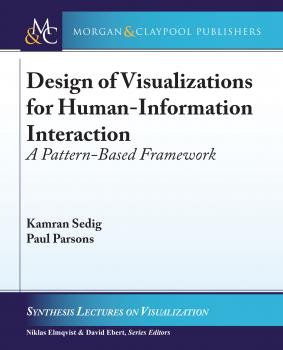Программы
Различные книги в жанре ПрограммыDomain-Sensitive Temporal Tagging
This book covers the topic of temporal tagging, the detection of temporal expressions and the normalization of their semantics to some standard format. It places a special focus on the challenges and opportunities of domain-sensitive temporal tagging. After providing background knowledge on the concept of time, the book continues with a comprehensive survey of current research on temporal tagging. The authors provide an overview of existing techniques and tools, and highlight key issues that need to be addressed. This book is a valuable resource for researchers and application developers who need to become familiar with the topic and want to know the recent trends, current tools and techniques, as well as different application domains in which temporal information is of utmost importance. Due to the prevalence of temporal expressions in diverse types of documents and the importance of temporal information in any information space, temporal tagging is an important task in natural language processing (NLP), and applications of several domains can benefit from the output of temporal taggers to provide more meaningful and useful results. In recent years, temporal tagging has been an active field in NLP and computational linguistics. Several approaches to temporal tagging have been proposed, annotation standards have been developed, gold standard data sets have been created, and research competitions have been organized. Furthermore, some temporal taggers have also been made publicly available so that temporal tagging output is not just exploited in research, but is finding its way into real world applications. In addition, this book particularly focuses on domain-specific temporal tagging of documents. This is a crucial aspect as different types of documents (e.g., news articles, narratives, and colloquial texts) result in diverse challenges for temporal taggers and should be processed in a domain-sensitive manner.
Linked Lexical Knowledge Bases
This book conveys the fundamentals of Linked Lexical Knowledge Bases (LLKB) and sheds light on their different aspects from various perspectives, focusing on their construction and use in natural language processing (NLP). It characterizes a wide range of both expert-based and collaboratively constructed lexical knowledge bases. Only basic familiarity with NLP is required and this book has been written for both students and researchers in NLP and related fields who are interested in knowledge-based approaches to language analysis and their applications. Lexical Knowledge Bases (LKBs) are indispensable in many areas of natural language processing, as they encode human knowledge of language in machine readable form, and as such, they are required as a reference when machines attempt to interpret natural language in accordance with human perception. In recent years, numerous research efforts have led to the insight that to make the best use of available knowledge, the orchestrated exploitation of different LKBs is necessary. This allows us to not only extend the range of covered words and senses, but also gives us the opportunity to obtain a richer knowledge representation when a particular meaning of a word is covered in more than one resource. Examples where such an orchestrated usage of LKBs proved beneficial include word sense disambiguation, semantic role labeling, semantic parsing, and text classification. This book presents different kinds of automatic, manual, and collaborative linkings between LKBs. A special chapter is devoted to the linking algorithms employing text-based, graph-based, and joint modeling methods. Following this, it presents a set of higher-level NLP tasks and algorithms, effectively utilizing the knowledge in LLKBs. Among them, you will find advanced methods, e.g., distant supervision, or continuous vector space models of knowledge bases (KB), that have become widely used at the time of this book's writing. Finally, multilingual applications of LLKB's, such as cross-lingual semantic relatedness and computer-aided translation are discussed, as well as tools and interfaces for exploring LLKBs, followed by conclusions and future research directions.
Metaphor
The literary imagination may take flight on the wings of metaphor, but hard-headed scientists are just as likely as doe-eyed poets to reach for a metaphor when the descriptive need arises. Metaphor is a pervasive aspect of every genre of text and every register of speech, and is as useful for describing the inner workings of a «black hole» (itself a metaphor) as it is the affairs of the human heart. The ubiquity of metaphor in natural language thus poses a significant challenge for Natural Language Processing (NLP) systems and their builders, who cannot afford to wait until the problems of literal language have been solved before turning their attention to figurative phenomena. This book offers a comprehensive approach to the computational treatment of metaphor and its figurative brethren—including simile, analogy, and conceptual blending—that does not shy away from their important cognitive and philosophical dimensions. Veale, Shutova, and Beigman Klebanov approach metaphor from multiple computational perspectives, providing coverage of both symbolic and statistical approaches to interpretation and paraphrase generation, while also considering key contributions from philosophy on what constitutes the «meaning» of a metaphor. This book also surveys available metaphor corpora and discusses protocols for metaphor annotation. Any reader with an interest in metaphor, from beginning researchers to seasoned scholars, will find this book to be an invaluable guide to what is a fascinating linguistic phenomenon.









